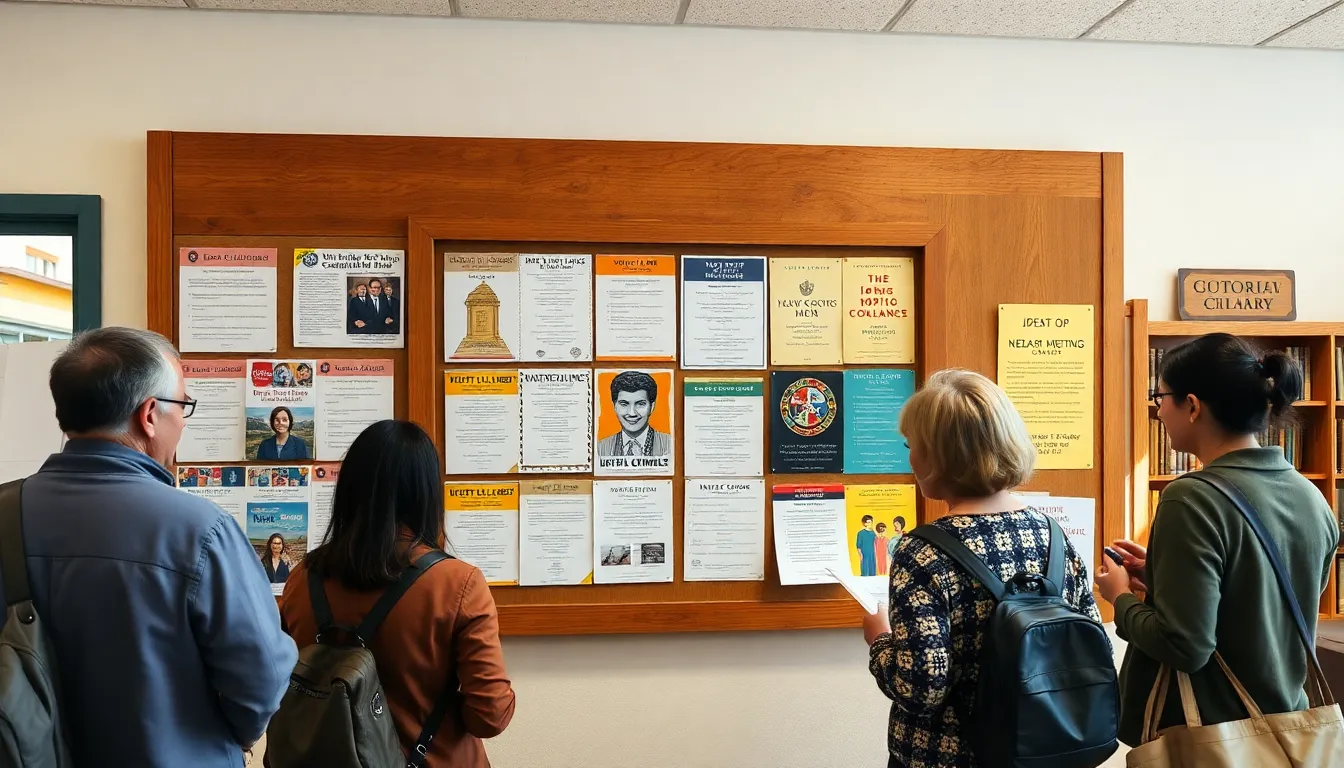Table of Contents
ToggleCivic announcements play a crucial role in keeping communities informed and engaged. These communications serve as vital links between local governments and residents, ensuring everyone stays updated on important events, initiatives, and changes that affect their daily lives. From public meetings to safety alerts, civic announcements help foster a sense of community and encourage civic participation.
In an age where information flows rapidly, understanding how to effectively communicate these announcements is essential. Whether through social media, newsletters, or community boards, the methods of dissemination can significantly impact community engagement. Exploring the nuances of civic announcements not only highlights their importance but also uncovers best practices for delivering information that resonates with the public.
Overview of Civic Announcements
Civic announcements serve as crucial tools for connecting local governments with community members. They provide essential information about events, initiatives, and changes impacting residents’ daily lives.
Definition and Purpose
Civic announcements refer to official communications from local governments, agencies, or organizations aimed at informing the public. Their primary purpose is to update residents on significant community matters, such as public meetings, new policies, or funding opportunities. These announcements promote transparency and facilitate informed citizen participation in local governance.
Importance in Communities
Civic announcements play a vital role in fostering community engagement. They ensure residents remain informed about local issues, which enhances civic participation. By delivering timely and relevant information, these announcements empower individuals to take action, attend events, or voice opinions on community matters. Furthermore, effective civic announcements cultivate trust between local officials and residents, reinforcing the social fabric of neighborhoods.
Types of Civic Announcements


Civic announcements encompass various types that serve distinct purposes. These notifications ensure residents stay informed about essential community matters.
Government Notifications
Government notifications inform the public about critical changes or policies. These announcements include updates on tax rates, zoning regulations, or public service changes. They provide timely information on legislative measures and official actions affecting the community. Examples include public safety advisories and announcements about infrastructure projects. Effective communication ensures residents understand these updates and their implications.
Public Events and Meetings
Public events and meetings promote community engagement. Civic announcements about these gatherings include town hall meetings, public workshops, and community festivals. They offer residents opportunities to participate in local discussions and voice concerns. Notifications include essential details, such as date, time, and location, ensuring accessibility. Examples are annual community fairs and budget hearings that encourage citizen involvement.
Channels for Dissemination
Civic announcements utilize various channels to effectively reach residents. These channels include traditional media and digital platforms, each playing a crucial role in informing the public.
Traditional Media
Traditional media remain essential for disseminating civic announcements. Local newspapers provide detailed coverage of community events, government policies, and public safety advisories. Television and radio broadcasts deliver timely updates, ensuring immediate access to critical information for residents. Community bulletin boards in local libraries and public buildings also serve as physical repositories for civic announcements, promoting awareness among residents who may not engage with digital media.
Digital Platforms
Digital platforms enhance the reach of civic announcements, engaging a broader audience. Social media channels, such as Facebook and Twitter, offer real-time updates, enabling governments and organizations to share information quickly. Websites serve as centralized hubs for civic announcements, providing residents with comprehensive resources, including FAQs and contact information. Email newsletters deliver curated content directly to subscribers, ensuring they receive relevant updates. Mobile applications designed for community engagement can also push notifications about urgent announcements, fostering immediate community involvement.
Challenges in Civic Announcements
Civic announcements face several challenges that can impede their effectiveness in engaging the community. Two significant issues include information overload and accessibility issues.
Information Overload
Residents often encounter an overwhelming amount of information from various sources, including civic announcements. Excessive notifications can overwhelm individuals, leading to confusion and disengagement. When announcements lack clarity or become redundant, residents may overlook critical updates or fail to recognize important changes in policies or services. It’s vital for local governments to prioritize relevant content, distilling messages to highlight key information. Utilizing concise language and clear formatting in announcements helps capture attention and ensures that essential details stand out.
Accessibility Issues
Accessibility presents a significant challenge, as not all residents have equal access to information. Digital divide barriers exist, with some community members lacking internet access or technological literacy. This gap can alienate specific demographics, including low-income individuals and seniors. Additionally, language barriers may limit understanding for non-English speaking residents. To combat these issues, local governments can provide multiple channels for announcements, such as printed materials and phone alerts. Ensuring content is available in various languages and formats promotes inclusivity, allowing all residents to engage with civic matters effectively.
Best Practices for Effective Announcements
Effective civic announcements require clarity and engagement to ensure maximum impact. Following best practices enhances communication and fosters community involvement.
Clarity and Conciseness
Clarity and conciseness serve as the backbone of effective announcements. These principles ensure that the intended message reaches the audience without confusion. Announcements should include:
- Focused Messaging: Highlight essential information such as the purpose and details of the event or policy change.
- Plain Language: Use straightforward language that resonates with diverse community members, avoiding jargon that may alienate residents.
- Summary Points: Present information in bullet points or numbered lists, enabling quick comprehension and retention of key details.
- Visual Aids: Incorporate graphics or infographics when appropriate, as they can simplify complex information and draw attention.
Audience Engagement Strategies
- Multichannel Distribution: Utilize various platforms such as social media, newsletters, and community boards for broader reach and accessibility.
- Interactive Elements: Include polls or questions in digital announcements, encouraging community feedback and engagement.
- Follow-Up Communication: Send reminders or updates as events approach, maintaining interest and participation leading up to the announcement.
- Community Partnerships: Collaborate with local organizations to amplify the message and leverage existing community networks for increased visibility.




